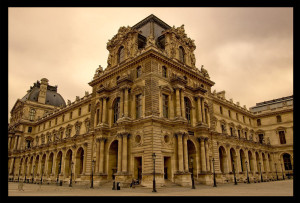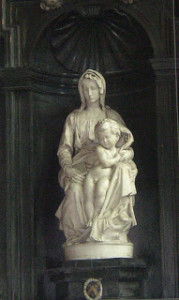Art in Historical Fiction Interview Series featuring Donna Russo Morin
Stephanie Renee dos Santos
 Welcome to week four of the series. This Saturday it’s my pleasure to introduce Donna Russo Morin, author of The King’s Agent. The novel brings to life Battista della Palla: an Italian art collector or a cunning thief of patriotic plunder? He works as a secret agent to François I, the King of France, during the 16th century Italian Renaissance, accruing artistic loot for the king’s collection. Meanwhile, a cloistered ward of the Marquess of Mantua, Lady Aurelia, has a calling and a longing for adventure. Both are in pursuit of the same elusive objet d’art, but with differing intentions as to what should be done with the treasure should it be found. Decoding hidden clues, they set out on art quests, where enemies abound, a famous artist is encountered, and political forces collide. For the chance to possess what they seek, they must enter into dark magical passages mirroring Dante’s Divine Comedy and into contact with supernatural powers that could forever change the balance of rule throughout Europe.
Welcome to week four of the series. This Saturday it’s my pleasure to introduce Donna Russo Morin, author of The King’s Agent. The novel brings to life Battista della Palla: an Italian art collector or a cunning thief of patriotic plunder? He works as a secret agent to François I, the King of France, during the 16th century Italian Renaissance, accruing artistic loot for the king’s collection. Meanwhile, a cloistered ward of the Marquess of Mantua, Lady Aurelia, has a calling and a longing for adventure. Both are in pursuit of the same elusive objet d’art, but with differing intentions as to what should be done with the treasure should it be found. Decoding hidden clues, they set out on art quests, where enemies abound, a famous artist is encountered, and political forces collide. For the chance to possess what they seek, they must enter into dark magical passages mirroring Dante’s Divine Comedy and into contact with supernatural powers that could forever change the balance of rule throughout Europe.
Let the journey begin…
Stephanie Renée dos Santos: What ignited you to tell a story of an art quest in the Italian Renaissance era?
Donna Russo Morin: It all began with my third book, To Serve a King, and my fascination with Francois I, truly the genitor of the Louvre Museum. He had art agents in all parts of Europe. One in particular, Battista della Paglia, Francois’ agent (The King’s Agent) in Italy, so captured my attention, and was such a charismatic, enigmatic person, that I knew he had to have his own story. My research for these two books revealed the depth of obsession with art during the Renaissance…the noble’s fixation with acquiring it. It was extreme…as rich men of our day collect cars and boats and houses, these men wanted art-work. Put together with Battista’s larger-than-life persona, and an art quest burst into my mind, begging to be told.
SRDS: What compelled you to include and focus on art and artists in your historical novel?
DRM: As I said, it all began with Francois in To Serve a King. But as I did my research, as I came to know the work of the Renaissance era (I had always been an Impressionist fanatic prior to that), I too became obsessed. Not only with the work, but with the artists themselves. The Italian Renaissance artists changed the very nature of their mediums, boldly going where no one had gone before. And they themselves were such dynamic individuals, I became completely infatuated. I related so well to them…to the sacrifices they made for their work, to their dedication to it, to their beliefs in it, and to how much of themselves—their souls—went into their works. In every one of my books, there is a very strong personal part of my life hidden in the threads of the story. These artists did the same with their work. I felt a kindred spirit with these men who lived more than five hundred years ago.
SRDS: What drew you to your specific visual art medium, art works, and artists?
DRM: There is something about paintings in particular that I find open to multiple interpretations. I find it wondrous, of both the art and of the human beings who view it, that one piece of art can be interpreted in ten different ways by ten different people. It is such enormous evidence of the individualism and uniqueness of all life.
As for the artists, I am distinctly drawn to those of my heritage. I am a full-Italian American, second generation, in fact, which brings me to them in the first instance. I am always looking for ways to counteract the derogatory stereotypical notions of Italians…that we are all Mafioso or of the ‘Jersey Shore’ variety. In truth, Italians are among the most cultured of nationalities. Additionally, there can be no discussion of Renaissance painters—of the astounding evolution of painting that went on during that period—without the Italians, truly the fore-fathers and the innovators of the Renaissance. Add to that a deeply personal connection to artists who struggled for their art, and I find myself surrounded by the likes of Michelangelo and da Vinci.
SRDS: How did you go about incorporating art and artists into the book?
DRM: Because The King’s Agent is loosely based on an art agent, it was rather easily done. I remember thinking in the early stages of my development that I would make him a good friend of Michelangelo’s. You can just imagine my excitement when I found actual letters between the two of them—they were, in fact, very close friends.
Another astounding moment in the development of this book took place on a lazy Saturday afternoon. I knew I wanted a slightly paranormal edge to the work as it related to the quest itself. I had been watching a program on JFK on the History Channel and the show directly following it was one called Ancient Aliens. This particular episode happened to be about UFO imagery in Renaissance painting. It was a moment of destiny; I felt it quite distinctly. My research, my mind, was ignited and it was off to the races. I knew I had to make it an integral part of the story. In fact I wrote a blog post where I break down, in more factual terms, the art work and its extraterrestrial symbolism (http://donnarussomorin.blogspot.com/2012/03/controversy-of-kings-agent.html).
Incorporating both the artists and the art became organic to the story…as if the art itself was yet another character in the complex tale.
SRDS: Was there any message you were trying to convey by including art and artists in the novel?
DRM: I remember attending a school committee meeting when my sons were both in high school, when budgets were tight and the first thing the committee wanted to cut was the arts and music programs. I was outraged. I attended the meeting and even spoke. I told them that in two hundred years, those looking back at our time won’t look at the dentists or the electrician or the used car salesperson (though all are utterly vital to the circle of life). When one looks to define a civilization, its character and its value, it looks to the arts, all forms. We are defined by our art, literature, music. If there is any one message in my inclusion of other art forms in my work, it is this.
SRDS: What story lines do you see as unexplored in this niche of art in fiction?
DRM: My current work in progress—a trilogy in fact—is exactly rooted in this idea: an unexplored niche of art in fiction.
SRDS: What do you think readers can gain by reading stories with art tie-ins?
DRM: The wonderful thing about good historical fiction—well-researched historical fiction firmly cemented in fact—is that our readers can learn from it while being entertained. I’ve received emails from readers thanking me for teaching them more about history than they ever learned in school. With an art tie-in, we as writers can take that a step further, bringing not only history but art and artists into the lives of our readers. After the release of The King’s Agent I received more than one email from readers telling me the book inspired them to visit a museum for the first time in their lives. It was astounding to hear—a true gift.
SRDS: Why does fiction with art and artists matter?
DRM: Well I have said that I believe civilizations are defined by their art. But I will take that a step further, the art of any period is a window into the soul of the civilization; it reveals our triumphs and our tragedies. To truly capture the essence of any moment in history, one must look to the artists and what they are creating to see it with distinct clarity.
SRDS: As you mentioned, you are working on new historical novels with an art-and-artists’ thread? Please share with us a bit about the upcoming books.
DRM: I am working on a trilogy, all of which concerns itself with art and a very unique group of artists. It is set in late 15th-century Florence, the height of the Renaissance at its birthplace. It is replete with the greats of the era…Botticelli, Leonardo da Vinci, Michelangelo and more…and it is as much about the evolution of art itself taking place, the Realism movement that defined the period, as it is the group of artists and what they must suffer for their art. And it’s all set against the backdrop of Florence in a political, civic and religious upheaval.
SRDS: Any further thoughts on art in fiction you’d like to share or expand on?
DRM: I feel strongly that artists, be they painters, sculptors, musicians or, yes, writers, are part of something magical, something bringing depth and color and brilliance to our lives. We are given a gift and it is our duty to honor it.
 About the author: Donna Russo Morin’s passion for the written word began when she was a child, took on a feminist edge as she grew through the sixties, and blossomed into a distinctive style of action-filled historical fiction at a defining moment in her life. With two degrees from the University of Rhode Island, the state in which she was born and raised, Donna’s first book, The Courtier’s Secret (2009) won RWI-RWA’s Best First Book Award and was a finalist in the National Readers’ Choice Award. The Secret of the Glass (2010), her second book, received a Single Titles Reviewers’ Choice Award and was a finalist in the USA Best Books of the Year Contest. Also a recipient of a Single Titles Reviewers’ Choice Award and a finalist in the USA Best Books of the Year Contest, Donna’s third Book, To Serve a King (2011), was a finalist in Foreword Magazine’s Book of the Year Award as well. The King’s Agent (2012),Donna’s latest release, received a coveted starred review in Publishers Weekly. In addition to writing and teaching writing, Donna has worked as a model and actor since the age of seventeen, when she did her first television commercial for Sears. Since then she has appeared in more than thirty television spots and print ads, everything from changing the oil in her car (that was acting) to modeling fur coats. She also appeared in three episodes of Showtime’s “The Brotherhood”, as well as in Martin Scorsese’s “The Departed”. Donna lives near the beauty shoreline of Rhode Island with her two sons, Devon and Dylan, her greatest works in progress.
About the author: Donna Russo Morin’s passion for the written word began when she was a child, took on a feminist edge as she grew through the sixties, and blossomed into a distinctive style of action-filled historical fiction at a defining moment in her life. With two degrees from the University of Rhode Island, the state in which she was born and raised, Donna’s first book, The Courtier’s Secret (2009) won RWI-RWA’s Best First Book Award and was a finalist in the National Readers’ Choice Award. The Secret of the Glass (2010), her second book, received a Single Titles Reviewers’ Choice Award and was a finalist in the USA Best Books of the Year Contest. Also a recipient of a Single Titles Reviewers’ Choice Award and a finalist in the USA Best Books of the Year Contest, Donna’s third Book, To Serve a King (2011), was a finalist in Foreword Magazine’s Book of the Year Award as well. The King’s Agent (2012),Donna’s latest release, received a coveted starred review in Publishers Weekly. In addition to writing and teaching writing, Donna has worked as a model and actor since the age of seventeen, when she did her first television commercial for Sears. Since then she has appeared in more than thirty television spots and print ads, everything from changing the oil in her car (that was acting) to modeling fur coats. She also appeared in three episodes of Showtime’s “The Brotherhood”, as well as in Martin Scorsese’s “The Departed”. Donna lives near the beauty shoreline of Rhode Island with her two sons, Devon and Dylan, her greatest works in progress.
For more about Donna’s works, visit: donnarussomorin.com and donnarussomorin.blogspot.com (where she often writes about the art and artists she loves so much).
Join us next Saturday June 28th for an interview with Alana White, author of The Sign of the Weeping Virgin
Interview posting schedule: May 31st Susan Vreeland, June 7th Mary F. Burns, June 14th Michael Dean, June 21st Donna Morin Russo, June 28th Alana White, July 5th Maryanne O’Hara, July 12th Stephanie Cowell, July 19th Cathy Marie Buchanan, July 26th Alicia Foster
 About the contributor: Stephanie Renée dos Santos is a fiction and freelance writer and leads writing & yoga workshops. She writes features for the Historical Novel Society. Currently, she is working on her first art-related historical novel, CUT FROM THE EARTH. A story of Portuguese tile and its surprising makers – The Great Lisbon Earthquake of 1755 — and the wisdom of nature to guide and heal. www.stephaniereneedossantos.com & Join Facebook group “Love of Art in Fiction”
About the contributor: Stephanie Renée dos Santos is a fiction and freelance writer and leads writing & yoga workshops. She writes features for the Historical Novel Society. Currently, she is working on her first art-related historical novel, CUT FROM THE EARTH. A story of Portuguese tile and its surprising makers – The Great Lisbon Earthquake of 1755 — and the wisdom of nature to guide and heal. www.stephaniereneedossantos.com & Join Facebook group “Love of Art in Fiction”










